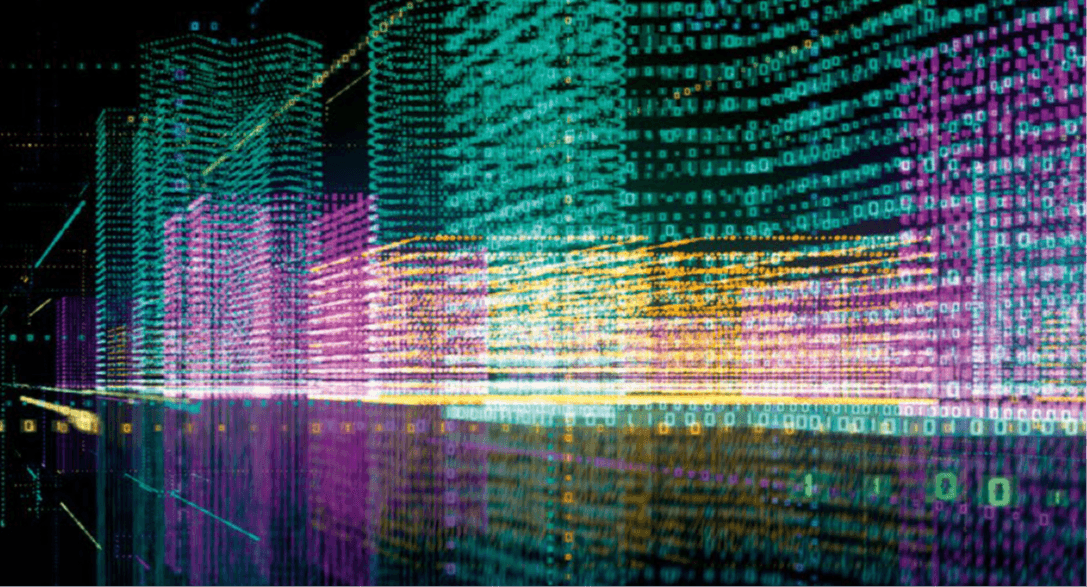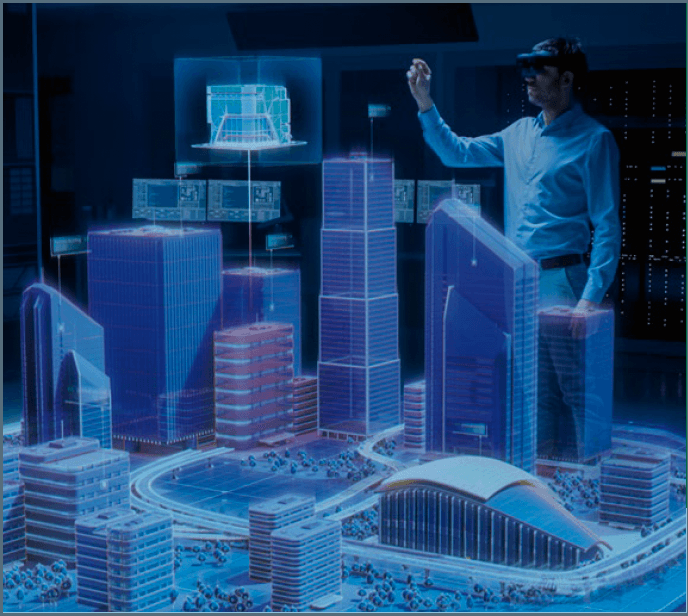THE POWER OF TWO
As technology evolves, so do new avenues for trialling solutions for urban sustainability and resilience. Today, digital twin simulation is being used to map out tomorrow’s city environments
From Expo 2020 Dubai's Theme Week Insights series
In 1970, NASA used digital twins to predict the success of bringing home the Apollo 13 spacecraft. They adapted the world-bound simulators to match the real-time conditions of the damaged spacecraft, and this helped them remotely guide the astronauts through the repair.
Since then, technology that can recreate real-life situations in the virtual world and troubleshoot operations in a controlled environment has become increasingly popular across a range of industries. It is also playing a part in how we design, deliver and manage our built environment, especially as we push for more sustainable living solutions.
The most meaningful use case for digital twins is how they “allow us to plan and model our visions of the cities of the future”, says Dr Amy Hochadel, Executive Director of Global Business at Connected Places Catapult. Connected Places Catapult works in partnership with the UK government to develop digital twin projects to improve city-oriented decision-making. One project in receipt of funding is a prototype of rapid refuelling technology for hydrogen-powered aircraft. This collaboration between Siemens and green hydrogen energy provider Protium is considered key to accelerating the UK’s transition to a net-zero transportation sector.
Beyond modelling how we might transition to carbon-neutral cities, digital twinning could help avert some of climate change's impacts. In Lisbon, it is estimated that using this technology for urban flood simulations could help the city avoid 20 deluges in the next century, saving more than EUR 100 million in livelihood loss and infrastructure damage.
Digital twin technology is also being used to tackle other unique challenges to sustainability. The Black Sea’s burgeoning reputation as a tourist destination has been great for local economies, but less so for the environment, with overcrowding causing an uptick in environmental degradation. To manage the large number of visitors, Dr Urska Starc-Peceny and her team at Tourism 4.0 are turning to digital twin technology.
Led by Slovenian technology R&D company Arctur, Tourism 4.0’s project creates virtual replicas of the local environment and visitor flow to model tourism’s impact. The project’s award-winning Tourism Impact Model (TIM) predicts strategy outcomes, enabling decision-makers to pick the right approach before rolling out real-world projects.
For example, city planners looking to minimise environmental degradation could test whether it would be more efficient to upgrade the electrical grid, partner with NGOs or alter their water management system. The TIM then displays the results of the trial intervention, letting decision-makers know whether their strategies will make their destination a sustainability ‘champion’, ‘sleeper’, ‘exploiter’ or ‘misuser’.
Digital twin technology has come a long way since NASA used it to save the lives of three astronauts. Now, as it is being deployed on a much grander scale, it could be, as Dr Hochadel puts it, our critical path to making cities “more resilient to shocks, disasters [and] climate change.”
“Digital twins allow us to plan and model our visions of the cities of the future” Dr Amy Hochadel, Executive Director, Global Business, Connected Places Catapult
Digital twins allow us to plan and model our visions of the cities of the future
Dr Amy Hochadel, Executive Director, Global Business, Connected Places Catapult
Digital twin technology allows city planners and decision-makers to test out real-life scenarios in a virtual environment
CHECKLIST
Build acceleration programmes for developing and incubating digital twin technologies, and incorporate these programmes into national governance strategies
Use digital twin technology to model the transition to carbon-neutral and sustainable city and transportation infrastructure
Harness the power of virtual simulation to test-run new policies and practices before rolling them out in the real world
DID YOU KNOW?
In November 2021, software company NVIDIA announced plans to build Earth-2 (E-2) – the world’s most advanced supercomputer. E-2 will be a digital twin of Earth and use artificial intelligence to simulate the future effects of climate change on the planet.
We'd love to connect with you
For general enquiries, please fill out the contact form or send an email to impact@expodubaigroup.ae

